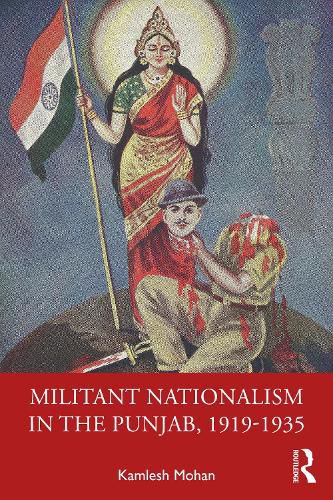Readings Newsletter
Become a Readings Member to make your shopping experience even easier.
Sign in or sign up for free!
You’re not far away from qualifying for FREE standard shipping within Australia
You’ve qualified for FREE standard shipping within Australia
The cart is loading…






This book presents a comprehensive account of the growth and development of militant nationalism in Punjab between two landmark events in the history of the Indian nationalist movement-the Jallianwala Bagh massacre and the martyrdom of Bhagat Singh. It highlights the ideology of the Babbar Akali Jatha, Kirti-Kisan Party, Punjab Naujawan Bharat Sabha, Hindustan Socialist Republican Association and the Atashi Chakkar group and their daring deeds. It traces the vital links between the militant movement in Punjab and its counterparts in Bengal, Bombay, U.P. and Delhi in the early 20th century, thus, interweaving region and nation. The author also discusses the long and much ignored contribution of Punjabi women as comrades-in-arms.
An important contribution to the history of India's struggle for freedom, this book will be indispensable for students and researchers of regional history, colonial history, and modern Indian history. For those interested in the history of South Asia, it will provide valuable insights into the changing nature of militancy from Veer Savarkar to Bhagat Singh.
$9.00 standard shipping within Australia
FREE standard shipping within Australia for orders over $100.00
Express & International shipping calculated at checkout
This book presents a comprehensive account of the growth and development of militant nationalism in Punjab between two landmark events in the history of the Indian nationalist movement-the Jallianwala Bagh massacre and the martyrdom of Bhagat Singh. It highlights the ideology of the Babbar Akali Jatha, Kirti-Kisan Party, Punjab Naujawan Bharat Sabha, Hindustan Socialist Republican Association and the Atashi Chakkar group and their daring deeds. It traces the vital links between the militant movement in Punjab and its counterparts in Bengal, Bombay, U.P. and Delhi in the early 20th century, thus, interweaving region and nation. The author also discusses the long and much ignored contribution of Punjabi women as comrades-in-arms.
An important contribution to the history of India's struggle for freedom, this book will be indispensable for students and researchers of regional history, colonial history, and modern Indian history. For those interested in the history of South Asia, it will provide valuable insights into the changing nature of militancy from Veer Savarkar to Bhagat Singh.